866
Traditional Japanese alcoholic drink of sake
Sake - a traditional Japanese alcoholic beverage obtained from rice. This is one of the symbols of Japan's oldest beverage, the appearance of which dates from the end of III century.
Now in January, which means that local manufacturers sake begins busy season.
21 photos via nomad1962

It's time to gut the rice bags and breathe life into the bored on the machine:
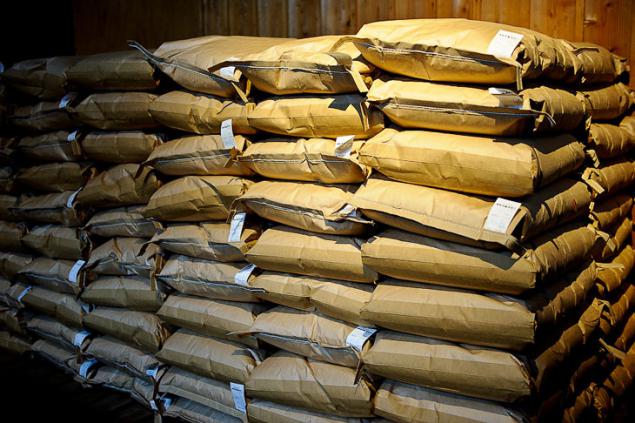
Contrary to popular belief, not sake rice wine (not distilled) and wine (not from grapes and fruit), and a distant relative of beer - both made from corn through fermentation.

Nowadays, the fermentation process takes place in a metal container. Previously, it used a huge barrel of cryptomeria, are now rare where you can meet. According to someone who knows a lot about this case, from the barrel of sake has its own special flavor:
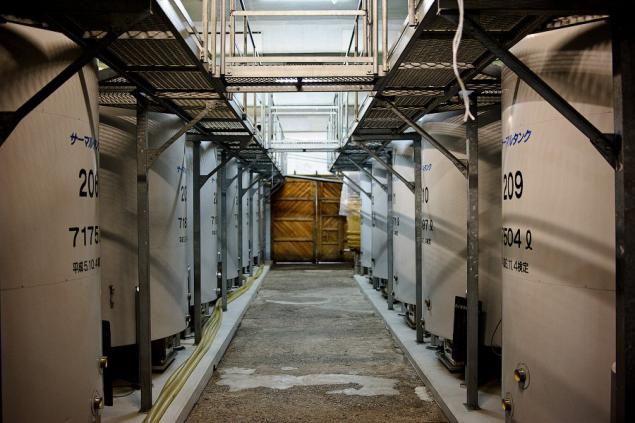
After fermentation, which lasts about 3 weeks, comes the next stage - pressing. The pipeline received Braga enters the unit, where separated on a pure sake (Sais) and distillation (sakekasu). Squeeze is used for cooking and in cosmetics.
They say that before all the costs of cooking sake recouped through the sale of pomace, and all net profits received from the sale of the producers of sake:
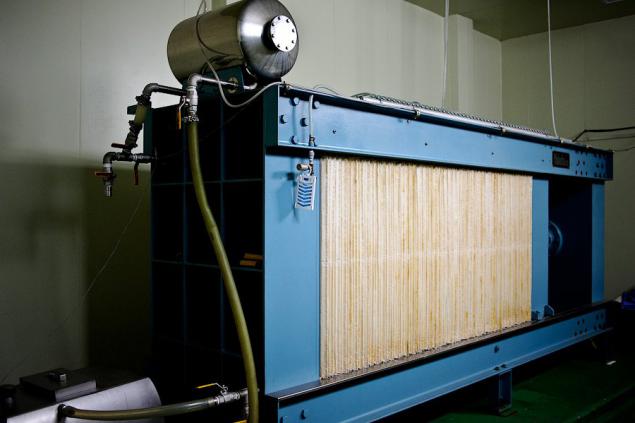
History maker "Imaё Tsukasa" began in the Edo period, about 250 years ago. There still is not only preserved, but also actively used areas of old buildings constructed without a single nail.
In older buildings, especially left "as if" one small part of the unfinished. The photo is a curve of the board signs. It was believed that if the structure of the "as if" unfinished, it will be a very long time. If the building will be completely finished, then it is only gradually die:

...
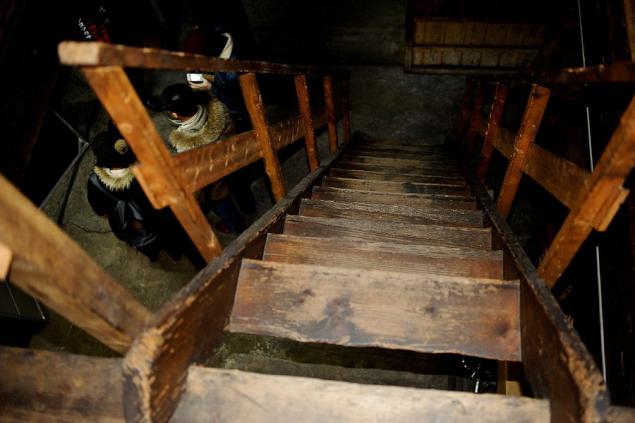
What happens if a person falls into a tank in the middle of the fermentation process? Of course, die. Braga is very hostile environment for bacteria. It seems like even now there are fatal accidents:

This guardian of the temple patron god sake Miwa. Each year, the manufacturer voluntarily sending in a solid batch of sake in the new temple. In response to the temple sends here this amulet

In the old days of sake were shipped not in bottles and barrels that mark such seals:
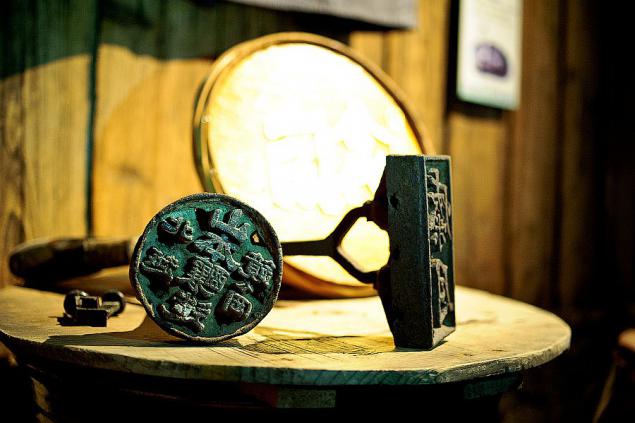
...
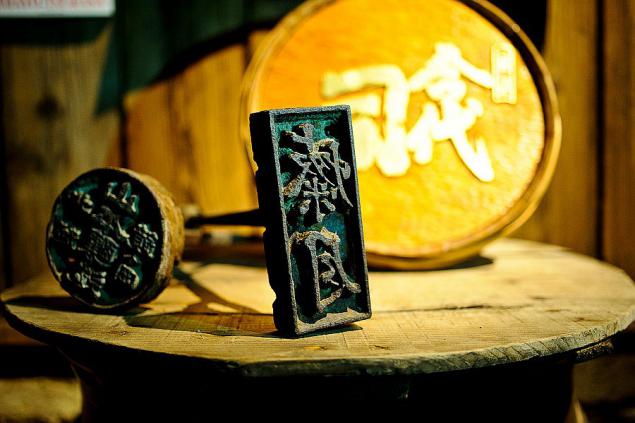
The visitor from the past - the unit selling sake. Scary popular thing in the middle of the last century, when there was a boom of Japanese sake. You put a paper cup, casting a 50 yen (at the current rate of about 200 yen, about 68 rubles) and receive a portion of excellent warm sake:
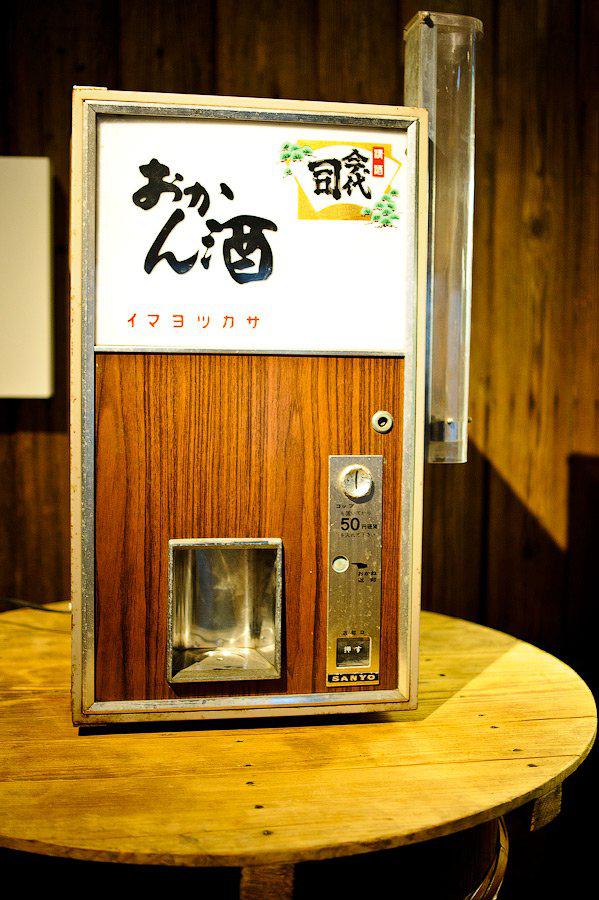
Apparatus for measuring the fortress sake:

During the fermentation process is necessary to maintain a constant temperature of 10 degrees. Now everything is automated, and previously had shaman through these vessels. If the temperature of the mash was too large, the vessel threw the ice and placed in a barrel of Braga. If on the contrary, instead of ice poured boiling water:

Rice for Sake:
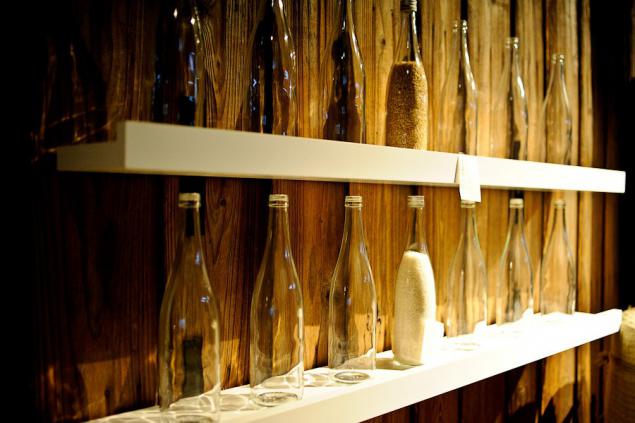
Brown rice "genmay»:

And it is ready for further use rice polished to 40%:
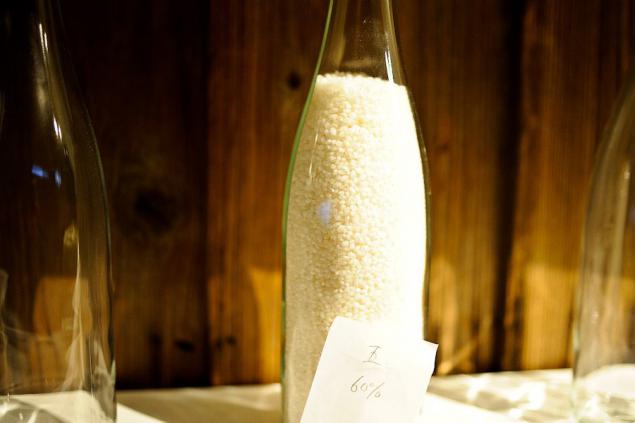
After filtration sake must undergo exposure for about 6 months. This huge rope (forgot the name) changed every year. It is said that when it darkens, sake can be considered ready for use:
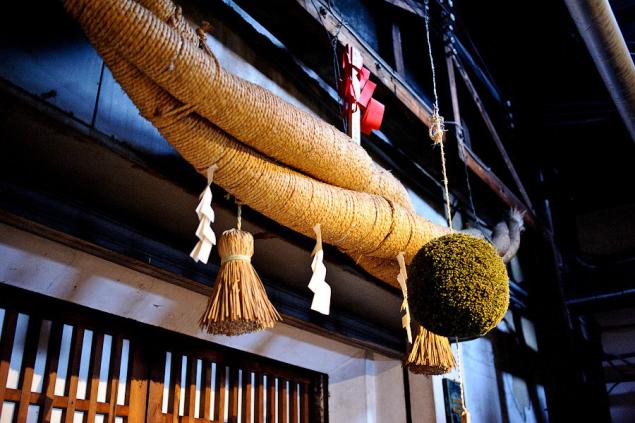
Well, how do without tasting. Moreover, the free pour most expensive varieties.
By the way, the world's sake, too, has its own sommelier, just call it differently - "kikidzakesi."
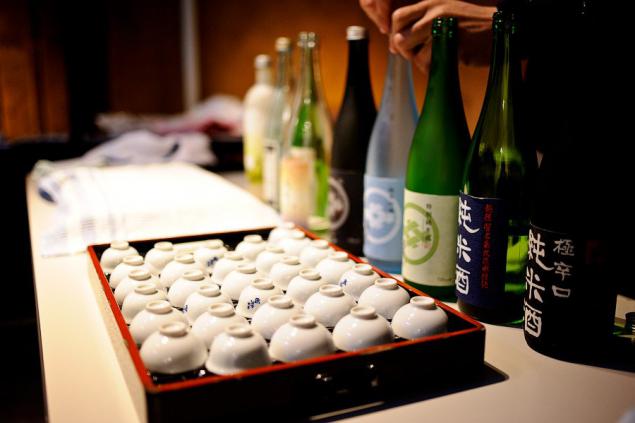
Here's a she, "Imaё Tsukasa."
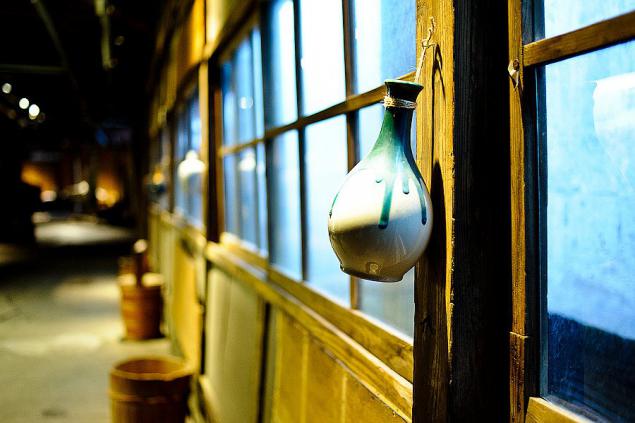
21

Source:
Now in January, which means that local manufacturers sake begins busy season.
21 photos via nomad1962

It's time to gut the rice bags and breathe life into the bored on the machine:

Contrary to popular belief, not sake rice wine (not distilled) and wine (not from grapes and fruit), and a distant relative of beer - both made from corn through fermentation.

Nowadays, the fermentation process takes place in a metal container. Previously, it used a huge barrel of cryptomeria, are now rare where you can meet. According to someone who knows a lot about this case, from the barrel of sake has its own special flavor:

After fermentation, which lasts about 3 weeks, comes the next stage - pressing. The pipeline received Braga enters the unit, where separated on a pure sake (Sais) and distillation (sakekasu). Squeeze is used for cooking and in cosmetics.
They say that before all the costs of cooking sake recouped through the sale of pomace, and all net profits received from the sale of the producers of sake:

History maker "Imaё Tsukasa" began in the Edo period, about 250 years ago. There still is not only preserved, but also actively used areas of old buildings constructed without a single nail.
In older buildings, especially left "as if" one small part of the unfinished. The photo is a curve of the board signs. It was believed that if the structure of the "as if" unfinished, it will be a very long time. If the building will be completely finished, then it is only gradually die:

...

What happens if a person falls into a tank in the middle of the fermentation process? Of course, die. Braga is very hostile environment for bacteria. It seems like even now there are fatal accidents:

This guardian of the temple patron god sake Miwa. Each year, the manufacturer voluntarily sending in a solid batch of sake in the new temple. In response to the temple sends here this amulet

In the old days of sake were shipped not in bottles and barrels that mark such seals:

...

The visitor from the past - the unit selling sake. Scary popular thing in the middle of the last century, when there was a boom of Japanese sake. You put a paper cup, casting a 50 yen (at the current rate of about 200 yen, about 68 rubles) and receive a portion of excellent warm sake:

Apparatus for measuring the fortress sake:

During the fermentation process is necessary to maintain a constant temperature of 10 degrees. Now everything is automated, and previously had shaman through these vessels. If the temperature of the mash was too large, the vessel threw the ice and placed in a barrel of Braga. If on the contrary, instead of ice poured boiling water:

Rice for Sake:

Brown rice "genmay»:

And it is ready for further use rice polished to 40%:

After filtration sake must undergo exposure for about 6 months. This huge rope (forgot the name) changed every year. It is said that when it darkens, sake can be considered ready for use:

Well, how do without tasting. Moreover, the free pour most expensive varieties.
By the way, the world's sake, too, has its own sommelier, just call it differently - "kikidzakesi."

Here's a she, "Imaё Tsukasa."

21

Source:























